The MAF sensor could cause those kinds of problems. Generally there is a way to test the output of the sensor to see if it is in the right voltage range. Not sure how yours works but many sensors rely on a potentiometer that can wear out. If you measure the resistance while moving the part that moves you can look for a spot where it jumps around.
You are using an out of date browser. It may not display this or other websites correctly.
You should upgrade or use an alternative browser.
You should upgrade or use an alternative browser.
ICE engine, 4.6L Ford, Intake Manifold Basket, what for?
- Thread starter Nehmo
- Start date
Nehmo
10 kW
I don't have a compression tester handy, but it's beginning to look like one's needed. I'm not sure, though. I don't think I'm getting the tailpipe smoke characteristic of bad rings.marty said:Are the brakes stuck? Try pushing the car on level ground. Brakes can be seized so bad that the car won't move.
Re:Don't do that.I disconnected the MAF while the engine was idling and it idled even worse, so I plugged it back in.
I am not a expert in auto repair. How about a compression test?...
The brakes are definitely not stuck. I can get the car to move a bit and, with a lot of care, I could perhaps drive it somewhere if there were no hills.
I'm investigating the (MAF) mass air flow sensor.

Maybe I can test it.
easyautodiagnostics.com seems convinced Ford uses the hot wire MAF (although the 4.6L engine isn't listed there). I do have 6 wires and the circuit diagram agrees. I suspect the Powertrain Control Module (PCM) supplies a 5+ reference on one of the wires. I already cleaned it once. I'm going to do that again for GPs. Then I'll try to test it electrically.
There should be some kind of nominal voltage on the MAF signal at idle you can check. No idea what it should be.
You can also check the temperature sensors by measuring their resistance and comparing to a table of resistance vs. temp.
You can also check the temperature sensors by measuring their resistance and comparing to a table of resistance vs. temp.
Hillhater
100 TW
Is this a fuel injection engine ?
Are you sure you have fuel to all cylinders
God I hate modern motors... Give me an old carb and coil system any day !
Are you sure you have fuel to all cylinders
God I hate modern motors... Give me an old carb and coil system any day !
Nehmo
10 kW
The 4.6L Ford 2005 MAF sensor doesn't have any moving parts. It's the hot-wire kind that gives a simple voltage level output (not a frequency one as with some other vehicles, as I understand).fechter said:The MAF sensor could cause those kinds of problems. Generally there is a way to test the output of the sensor to see if it is in the right voltage range. Not sure how yours works but many sensors rely on a potentiometer that can wear out. If you measure the resistance while moving the part that moves you can look for a spot where it jumps around.
I was able to find a few places
How to Test the Ford Mass Air Flow (MAF) Sensor, test 4
Ford MAF Sensor Testing, Ground & Signal, youtube vid
that seemingly explained how to test a Mass Air Flow MAF sensor, even a Ford one, but I didn't find instructions on my specific one
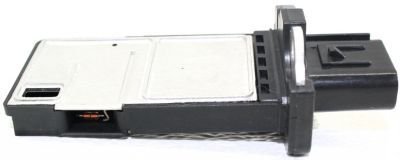
According to troubleshootmyvehicle, for a 1999 Ford 4.6L (mine is a 2005 4.6L),
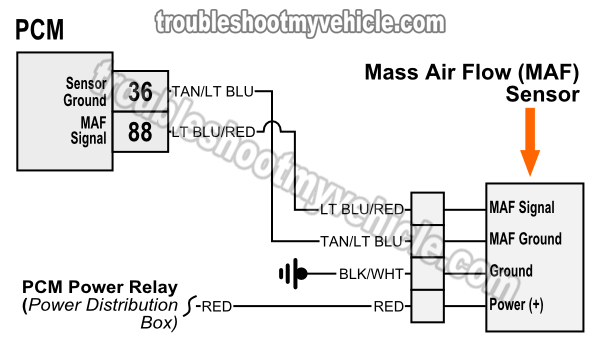
Tan/light blue - MAF ground (labeled MAFRT, return, apparently, on wire diagram)
Light blue/red - MAF signal (labeled MAF on wire diagram)
I conducted the tests insofar as I understood them.
The hot red test good.
The BL/WT is a good ground.
The TN/LBlu is also a good ground as it should be. There are 2 grounds here.
Now the LB/RD, labeled MAF signal (and just MAF on the wire diagram) is 1.2 V at idle and when the engine is revved up (don't have RPM meter), I get maybe 2.6 V. This an increase alright, and the increase is repeatable, but is that enough? The last vid linked to above says the small V increase is normal. But I had the impression that the voltage increase should be more. IDK.
I'm beginning to think I need to look elsewhere for the source of the problem. I suppose the fuel rail pressure temperature sensor is next. Suggestions?
marty
10 MW
marty said:Do you have a service manual? I find these extremely helpful when working on cars and trucks. You will see a wire diagram showing the fuel pump and wires all the way to the battery. Every connection, where it is and every wire in the car. Usually takes me a wile to figure out how to read diagrams of schematics, connections and where everything is in the car.
I tried to download - Ford Factory Service Manual DVD 2005-2006
Description
2005 - 2006 FORD, LINCOLN, MERCURY SERVICE / SHOP MANUAL DVD
From kickass.to
Its been going a few days and seems to be stuck at 55.6% I give up. Download or buy a DVD or paper book on eBay. $30 or so well spent.
marty said:View service manual online here:
https://www.alldatadiy.com/
$26.95 for one year
Do you have a service manual?marty said:The service manual should have some hard to follow and hard to understand instructions on troubleshooting MAF Mass Air Flow and MAP Manifold Absolute Pressure Sensor.
Nehmo
10 kW
I have access to the County library's subscription to Chilton's Library, which, so far, has had all the wiring diagrams I've needed. I don't have the so-called factory service manual, if such a manual is available. I question if a subscription to Alldatadiy would have the procedure to electrically test the MAF sensor because their sample vehicle section on MAF service and repair only details how to replace the module, which is trivial.marty said:Do you have a service manual?
Anyway, after more-thoroughly reading the test instructions I had already found, I'm convinced the 1 volt or so spread from idle to revved up is adequate. My results seem close enough to Ford MAF testing vid recommendations. However, I'm not altogether sure. This pdf Successful MAF diagnosis says a simple test often gives a passing grade to a truly bad MAF, and the article offers deep discussion of the subject.
I'm now looking into the Fuel Rail Pressure Temperature Sensor.
Seem like the MAF sensor is working OK. The hot wire kind can get gunk on them or the wire can break, that's about it. The other code pertained to something like
, which is like the MAP in my Bronco. See if there is an absolute pressure sensor somewhere, either manifold or ambient.MAP/Barometric Pressure Circuit
doctorGONZO
100 W
Hillhater said:Is this a fuel injection engine ?
Are you sure you have fuel to all cylinders
God I hate modern motors... Give me an old carb and coil system any day !
AMEN!
PS I like brushed electric motors too.
Nehmo
10 kW
Sam Bell gives the most authoritative advice I've found http://www.motor.com/magazine/pdfs/072006_04.pdf But, unfortunately, his main point seems to be that diagnosis is difficult.fechter said:Seem like the MAF sensor is working OK. The hot wire kind can get gunk on them or the wire can break, that's about it. The other code pertained to ... See if there is an absolute pressure sensor somewhere, either manifold or ambient.
"Fuel control systems
for most modern gasoline engines are
centered either on MAF or MAP (man-
ifold absolute pressure). MAF systems,
which, as their name suggests, measure
the weight of incoming air and then
meter the appropriate amount of fuel to
ensure efficient combustion, are poten-
tially more precise, although MAP sys-
tems, which calculate fuel requirements
based on engine load, have historically
demonstrated greater reliability"
The 4.6L Lincoln Town Car 2005 I'm working on doesn't have a MAP Manifold Absolute Pressure sensor.
The symptoms I"m encountering are very much like what people report from a bad MAF Mass Air Flow sensor. That's what's perplexing, since it seems to test ok via the voltage test. I suspect it's function is dependent on some other device as well. One cheap device, which, if defective, could impair the MAF is the PCV valve. I might as well change that to see if things improve. Changing a PCV is preventative maintenance anyway. At least that gives me a next step in this trouble shooting procedure.
If there is no pressure sensor, then scratch that off the list. Some cars have both MAF and barometric pressure sensors.
Bad temperature sensors can make the computer think it's like 140 degrees outside and lean the mixture. Temp sensors are easy to test with an ohmmeter.
How much does a new MAF sensor cost? Sometimes your time is worth more than the part. I hate replacing parts that aren't bad though.
It sounds like the mixture is lean.
Bad temperature sensors can make the computer think it's like 140 degrees outside and lean the mixture. Temp sensors are easy to test with an ohmmeter.
How much does a new MAF sensor cost? Sometimes your time is worth more than the part. I hate replacing parts that aren't bad though.
It sounds like the mixture is lean.
Nehmo
10 kW
A remanufactured MAF sensor for this 4.6L 2005 Ford is about $130 + core locally (and, although it's not realistic to get it this way, online I've found them down to $42).fechter said:How much does a new MAF sensor cost? Sometimes your time is worth more than the part.
But the issue of speculatively replacing parts points out one of the problems with working on this car. I'm not the owner, and (although I'm to a degree obligated by circumstance) I'm not getting paid, but the owner will pay for parts. The 83 year old owner is (to be blunt) getting senile and never was mechanically inclined to begin with. Historically, I repaired anything that went wrong with his car, and that was a working arrangement. But then he traded his functioning same-model-as-this 2001 (which means older in years but was actually younger by 100,000 miles) for this one. This "new" car limped for less than a hundred miles, and then it came into my care. Now, my friend, in a manner of thinking, thinks this new car is sort-of his old car but that something minor went wrong with it.
I'd like to tell him it could use a new PCV valve, for example. This is because diagnosing the MAF sensor is predicated on having a reliability-good PCV valve (Sam Bell's advice). And I believe the $66 PCV valve should be changed as a matter of preventive maintenance.
But it's hard to explain to this guy that the car should have a part that's only indirectly related to the repair. And he doesn't want to try to understand an explanation. (I already replaced the intake manifold and the fuel pump + repaired the fuel tank etc.) Perhaps his condition has reached the point that he's gone beyond being responsible enough to own a car.
If I were doing this job for a paying customer (and don't misunderstand; I'm not in the business of repairing cars), I would buy the PCV valve, the MAF sensor, and the Fuel Rail Pressure Sensor.

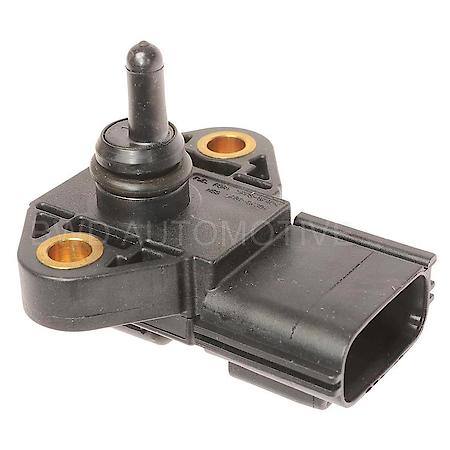
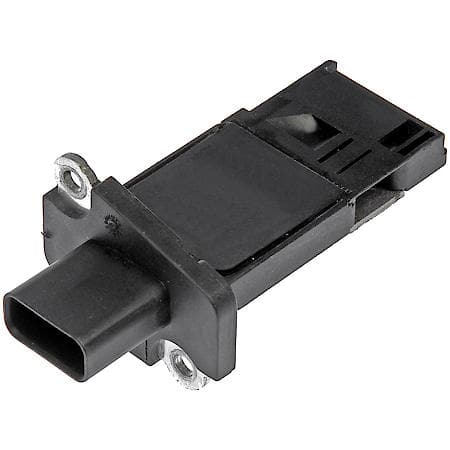
Then, if those replacements didn't improve things, I would take off the timing chain cover (which is a lot of work) to check if the timing jumped. I don't know of another way the check for a timing jump, but if someone has an idea, let me know please.
dnmun
1 PW
you can watch the valves and determine when the valve begins to lift and compare that to the degrees in advance of TDC and then see how far it is on the timing pulley. or look at the distributor and see if you can tell where the rotor is at TDC. but it sounded like you were getting a injector voltage error originally.
Nehmo
10 kW
After clearing the codes, I now only get thednmun said:you can watch the valves and determine when the valve begins to lift and compare that to the degrees in advance of TDC and then see how far it is on the timing pulley. or look at the distributor and see if you can tell where the rotor is at TDC. but it sounded like you were getting a injector voltage error originally.
pending PO183 - Ford - Engine Fuel Temperature Sensor 'A' Circuit High Input
pending PO193 - Ford- Fuel Rail Pressure Sensor Circuit High Input
I'd have to clear them again to get a good new reading. I played with some things that would set a code. Anyway, I'm not getting the misfire codes.
There is no visible distributor in the 2005 4.6L SOHC Ford. It's handled inside the PCM Powertrain Control Module. Low voltage wires go to the 8 COPs Coil On Plugs, which sit above the spark plugs.

This engine has very long timing chains that are known to be a weak point, particularly with inadequate oil changes. I'm really hesitant to accuse them, but another guy tells me they could be the culprit, and I listen to almost everybody. IDK. But I understand your point. The last time I had to deal with a timing chain problem was on a 351M Ford. That had a traditional distributor. Maybe I'm getting old.
dnmun
1 PW
me too. new cars are like a foreign land. my newest ICE car is 25 years old. i was able to identify a failure of the igniter in the distributor. replaced it and it ran again, thanks ebay, $7.
also bot a new distributor on ebay for $90 and put it on the other honda wagon when i had to rebuild the head and replace the pan gasket.
also bot a new distributor on ebay for $90 and put it on the other honda wagon when i had to rebuild the head and replace the pan gasket.
OK, don't throw money at it. From experience, it rarely works.
If the timing chain slipped I'd think the compression would be way low on that side. You could borrow a compression tester and pull a plug on each bank to take a reading.
The fuel pressure and temp sensors should be possible to test once you locate them.
If the timing chain slipped I'd think the compression would be way low on that side. You could borrow a compression tester and pull a plug on each bank to take a reading.
The fuel pressure and temp sensors should be possible to test once you locate them.
marty
10 MW
This is like Auto Repair HypochondriasisNehmo said:x
After clearing the codes, I now only get the
pending PO183 - Ford - Engine Fuel Temperature Sensor 'A' Circuit High Input
pending PO193 - Ford- Fuel Rail Pressure Sensor Circuit High Input
I'd have to clear them again to get a good new reading. I played with some things that would set a code. Anyway, I'm not getting the misfire codes.
x
Lets take a few steps back. Lets concentrate on what is the problem?
Put everything back together. Computer is angry with you. Now is the time to ask for forgiveness. Remove negative battery terminal for 5 minutes. During this 5 minutes pray to the Endless-Sphere God or what ever religion ya like. Replace negative battery terminal. Now pretend that you just got to this planet and your mission is to diagnose and repair this car. Check the oil. Start it drive it. Buy some gas if needed. Now report back on what is the problem?Nehmo said:x Basically, it idles bad and doesn't have power.x
If ya still having idling or driving problems? Erase all old codes. Let senile man drive around for a few days. Now take a new reading and let us know what code, codes you see? Warning! If senile man has lost his driving skills? It might be time to call the tow truck and say goodbye to this car
cassschr1
10 kW
ironically I'm rebuilding a 4.0 L Ford it's still on the engine stand I didn't read this whole thread. But did you connect that wire underneath the intake manifold. That is a knock sensor maybe the computer needs it in order to work.I hope you have a Ford shop manuaI . To put the front cover on, and the cradle, (girdle) again needs special alignment tools .so does the cam timing if you loosened either
cam bolt the whole engine needs to be retimed.I know my engine was a 4.0 L and this is a 4.6 but it looks similar in construction.we could Skype if you want.when I have time again I will read the whole thread.
cam bolt the whole engine needs to be retimed.I know my engine was a 4.0 L and this is a 4.6 but it looks similar in construction.we could Skype if you want.when I have time again I will read the whole thread.
cassschr1
10 kW
so let's back up a bit here. Is that picture of this engine? Do you have the engine pulled?did you find pieces of plastic in the oil pump?are the slides broken on the timing chain tensioners?
dnmun
1 PW
remove battery. tow car down street. insert flaming torch into gas filler tube. run fast.
marty
10 MW
Suspect Nehmo found this picture on the internet. His engine is not disassembled and is still in the car.cassschr1 said:so let's back up a bit here. Is that picture of this engine? Do you have the engine pulled?did you find pieces of plastic in the oil pump?are the slides broken on the timing chain tensioners?

Nehmo
10 kW
The pic is from a threadby Dereck (who states having a auto repair shop in his profile) in Lincolns OnLine Message Forum, which, although having some good posts, isnot well watched by the knowledgeable. On the web, there is no shortage of stories about the timing chains in the 4.6L Ford. It appears, the chains are a problem area because they are unusually long, but if correctly maintained with frequent oil changes and the use of an oil filter with an anti-drainback valve, problems are unlikely.cassschr1 said:so let's back up a bit here. Is that picture of this engine? Do you have the engine pulled?did you find pieces of plastic in the oil pump?are the slides broken on the timing chain tensioners?
I've also found some advice ondetermining if an engine has jumped. The one I just linked to isn't about an engine with 2 long chains, so this engine, 4.6 L 2-valve SOHC V8, should (hopefully) be simpler because I can compare the compression of the two banks.
Nehmo
10 kW
That wouldn't be realistic. I can start it. I can get it to move on flat ground. I can rev it in idle. But the slightest need for power, say, climbing a brick-high obstacle, will kill the engine. If I got stranded driving it around the block, I'd have yet another problem. Now here's a clue: Once the engine is warmed up, it is very difficult to start. But when cold, it starts in seconds.marty said:... Start it drive it...
I'm speculating some temperature sensor isn't reporting properly. I also got the temp sensor codes at one point before I cleared them.
Previously I cleared the codes, and then after experimentally running the engine a bit, I got 2 pending codes:<br>
pending PO183 - Ford - Engine Fuel Temperature Sensor 'A' Circuit High Input
pending PO193 - Ford Fuel Rail Pressure Sensor Circuit High Input
I cleared the codes again. Now after starting once, I get one pending code:
pending P0106 MAP/Barometric Pressure Circuit Range/Performance Problem (the link is for search results; I don't have an answer)
The engine doesn't have a MAP; it uses a MAF sensor. I'm not clear on this though. Some people say a defective EGR module could set that code and some say MAF.
Really, the owner is ready to give me some money for parts. I'm ready to just buy sumtin with a guess and an hope. Somehow, I have to explain to him we'll probably be throwing the $ down a hole, though.
marty
10 MW
P0106 Congratulations! One code. Now buy a service manual for information as to what the problem might be. Yes buy a Ford service manual. No don't go to the library and look at stupid Chiltons books. Stop looking at what others wrote on internet forums. Sorry if I am a pest. If you don't buy a service manual I will buy one, copy it and mail a CD to you.
2005 2006 Lincoln Towncar service repair maintenance technical shop manual
Price: US $9.00
Free shipping
http://www.ebay.com/itm/2005-2006-Lincoln-Towncar-service-repair-maintenance-technical-shop-manual-/151390890501?pt=Motors_Manuals_Literature&hash=item233f99aa05&vxp=mtr#shpCntId
eBay item number: 151390890501
OEM SERVICE/REPAIR MANUAL
LINCOLN TOWNCAR
2005 2006
This CD will work with Windows 7, Vista, XP and Win 2000 systems with a DVD-ROM drive. Do you have a computer?
If you don't have $9 or a credit card? Send me a private message and I will get a service manual to you.
2005 2006 Lincoln Towncar service repair maintenance technical shop manual
Price: US $9.00
Free shipping
http://www.ebay.com/itm/2005-2006-Lincoln-Towncar-service-repair-maintenance-technical-shop-manual-/151390890501?pt=Motors_Manuals_Literature&hash=item233f99aa05&vxp=mtr#shpCntId
eBay item number: 151390890501
OEM SERVICE/REPAIR MANUAL
LINCOLN TOWNCAR
2005 2006
This CD will work with Windows 7, Vista, XP and Win 2000 systems with a DVD-ROM drive. Do you have a computer?
If you don't have $9 or a credit card? Send me a private message and I will get a service manual to you.
Nehmo
10 kW
marty said:P0106 Congratulations! ...


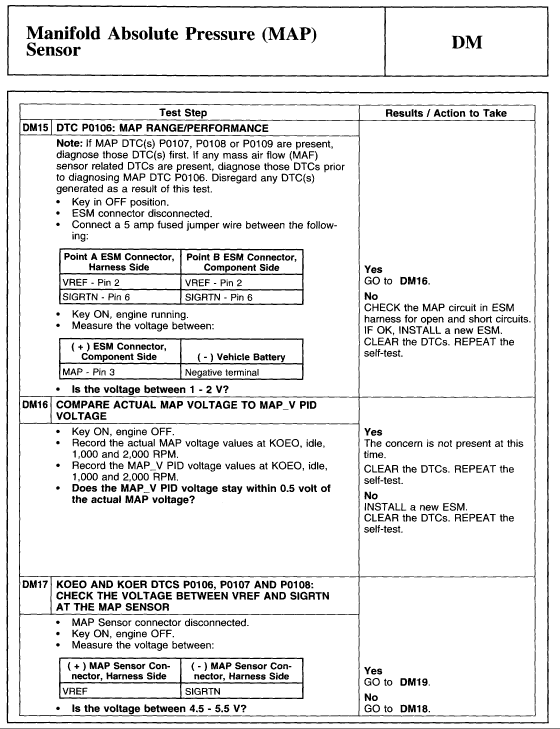

These are from a Ford manual for the vehicle with the same engine (I'm fairly sure). Anyway, the EGR (Exhaust Gas Recirculation) valve looks like mine, and the EGR appears to have the MAP (Manifold Absolute Pressure) sensor inside. There is no separate MAP sensor on the vehicle, and the MAP wire goes to the EGR.
Anyhow, if I have this straight, code P0106 sends me to DM15 which tells me to
jump (short with a fuse) between SIGRTN (pin 6) and VREF (pin 2)
then measure the voltage at pin 3 and see if it's between 1 and 2 volts.
That's my research so far. I'm going to try it tomorrow. --- But if you want my opinion, that manual is not laid out very clearly. They take a simple task and make it confusing.
Similar threads
- Replies
- 6
- Views
- 7,852
- Replies
- 10
- Views
- 34,473
- Replies
- 462
- Views
- 87,863
- Replies
- 27
- Views
- 2,412
- Replies
- 10
- Views
- 4,432

